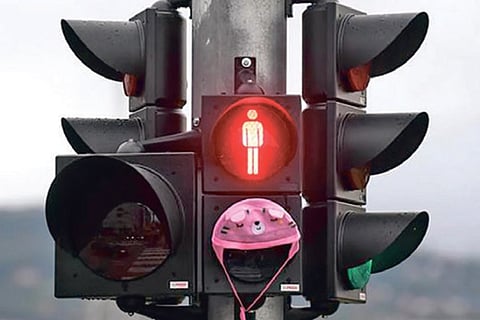

Chennai
There is also a gray zone for regions where there is insufficient data. How is each region assigned a traffic light? The rate of new infections, or incidence, per 100,000 inhabitants in the previous 14 days and the rate of positive COVID-19 tests decide which colour is attributed to a given region.
Green is for regions reporting less than 25 new infections per 100,000 inhabitants, and test positivity is below 4%. Orange is for regions reporting less than 50 new infections, and test positivity is over 4% — or the incidence is between 25 and 150 and test positivity is below 4%. Red is for regions with more than 50 new infections per 100,000 incidents, and test positivity is over 4% — or the incidence is over 150 per 100,000 in the past 14 days.
The information update
The European Center for Disease Prevention and Control (ECDC) in Stockholm on Friday will publish a map of the EU on its website that highlights which colour is designated to a given region. The site already offers an overview of the travel regulations for each of the EU’s 27 member states. So far, each EU member state has determined risk zones according to its own discretion. European Commission President Ursula von der Leyen said this approach created a patchwork that was difficult to decipher.
“It’s hard to know where you can travel, what rules you need to follow when you get there, and what rules apply when you get home,” she said. “We have to coordinate these measures to make life easier for Europeans.” Germany’s top institute for infectious diseases, the Robert Koch Institute, which has been instrumental in determining the German government’s coronavirus policy, will adjust its measures for declaring regions as risk zones.
So far, the agency has been using 50 new infections per 100,000 inhabitants in the past seven days as its benchmark so far — and not the now-prescribed 14 days. Lithuania, for its part, would need to change its benchmark from 25 new infections per 100,000 inhabitants to 50 new infections.
Luxembourg’s Minister of Foreign and European Affairs Jean Asselborn criticized the figure of 50 per 100,000 inhabitants, saying this was a German invention and that it was simply what Germany’s health authorities could deal with when tracing the chains of infection within the country.
Luxembourg’s top envoy said his country had introduced comprehensive testing from the very beginning and was investigating all cases and, due to the rise in confirmed cases, had therefore been declared a risk zone. The diplomat, who also heads Luxembourg’s European affairs, abstained from voting on the new system after saying his country was being “punished” for large-scale testing.
Luxembourg is indeed leading Europe in testing, with over 6,000 tests per 100,000 inhabitants. Germany is well behind — with 1,300 tests. Bulgaria, where Germany has categorized only two districts as a risk area, is trailing at 380. Germany has labelled all of Luxembourg a risk area since September 25, the second time the country has been categorized as such since July.
The only EU state what would be categorised as “green” is Finland. The EU’s coronavirus traffic light system is, in the end, only a recommendation — meaning EU countries are not legally required to implement or enforce the system. Member states will still be able to decide whether to implement recommended measures. So, they will be able to introduce quarantine and tests for travelers if they like, but they will not be compelled to. Nor will the EU guidelines override national regulations. Therefore, in Germany, it could be that the existing regulations in various federal states are maintained as such.
— This article has been provided by Deutsche Welle
Visit news.dtnext.in to explore our interactive epaper!
Download the DT Next app for more exciting features!
Click here for iOS
Click here for Android